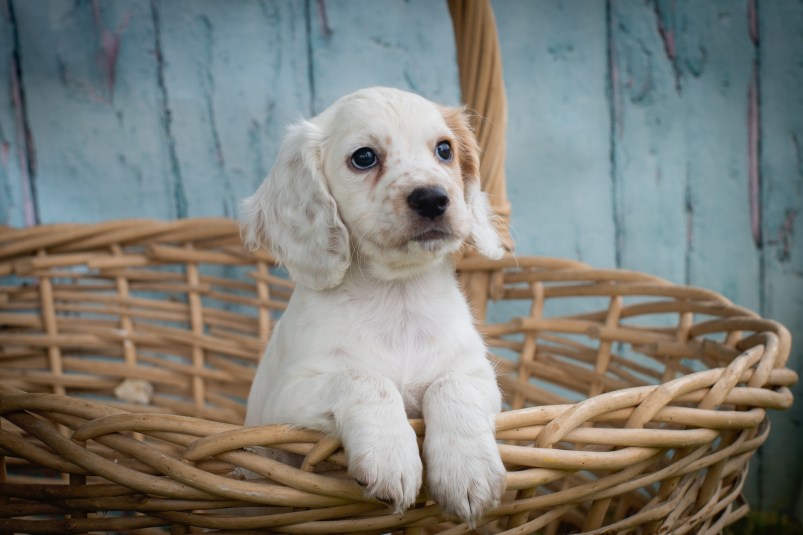6 Expert Tips for Introducing a Puppy to Your Home

Bringing a new pup home involves a lot more than buying it a cozy bed and getting a supply of dog food. Puppy training manuals, such as How to Teach a New Dog Old Tricks: The Sirius Puppy Training Manual and After You Get Your Puppy by British vet and animal behaviorist Dr. Ian Dunbar, can be a great help.
But to apply the lessons taught in those books, you need to be present as much as possible for the first few weeks of a dog’s new life in your home. Here’s a few tips to try:
Find a space for your pup.
First off, the pup will need a refuge — a cozy, quiet place of its own — until it adjusts to its new surroundings. This can be a partitioned corner of a quiet room, or even a travel crate, furnished with some bedding and chew toys, where it can retreat and feel safe. Anytime you can’t be physically present to supervise the pup, it should be secured in its safe place.
Establish behavioral rules immediately.
As Dr. Dunbar says, “If you want your dog to follow the rules of the house, by all means, do not keep the rules a secret.” Show the pup its toilet area straight away, and take it there frequently so it gets the message, and reward it when it goes in the right place. If it chews on something it shouldn’t, immediately exchange the forbidden object for one of its chew toys, which should be always available. Puppies chew, so get used to it.
Introduce new people and other animals gradually.
To avoid needlessly stressing your pup in social situations, introduce new people and other animals very gradually, always allowing it access to its ‘safe space’ so it can retreat there if it feels overwhelmed or threatened. And make sure it can always get to its toilet area, too, in case it needs to go.
Familiarize your puppy with it’s surroundings.
Allow your puppy to familiarize itself with the house and backyard, if there is one, but keep a watchful eye and don’t let it wander around unsupervised. And keep those chew toys handy to distract it if it starts to do things it shouldn’t, such as dig up the garden or vandalize the laundry basket. After two to three weeks your new arrival should start feeling secure and confident in its new surroundings.
Off to school.
A course of puppy obedience classes where both of you will learn more about how to get along with each other and your dog can meet new humans and canines in greater number and begin to feel comfortable around them.
Out and about.
Once it has learned to walk on a leash, the puppy can begin to experience short excursions around the neighborhood — make sure it is fully vaccinated first. After the pup is used to obeying your calls, it’ll be time to introduce it to other dogs down at the local leash-free park. It’s a big, interesting world for a dog. Training yours early will make sure it enjoys it to the fullest.
This article originally appeared on our sister site, Homes to Love.
















